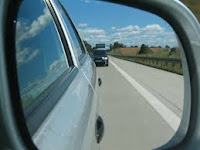Do you know the types of rust and corrosion and how to avoid and fix them? Let us guide you!
 |
| RUST |
 |
| CORROSION |
Most of these metals will corrode or rust eventually. This can lead to weakening of the metals and alter their structure and performance. But, you can use cleaners to rid some of the rusting. However, that does not make the metals stronger or restore them to their original quality.
Rust can happen in a number of ways.
 |
| SURFACE RUST |
The first being "surface rust": This is on the car paint that may have been scratched or cracked. When the sun, salt and/or water get to these chips, they speed up the rusting process. To avoid this from happening, try to keep the paint touched up and buffed. Adding an anti-rust sealer can only help. But if it does happen, use a small wire brush to rid the area of the rust, add some touch up paint, clear coat and a buff. It should be good as new.
 |
| SCALE RUST |
"Scale rust": This is usually brought onto exposed iron that comes in contact with salt and water. It's basically just an environmental factor. People that live in colder climates, generally with snow and rock salt, will have cars that rust faster. As well as people who live near the ocean. This is also a more serious type of rust. It is generally larger, has bubbles, flakes or pits (dents). The visible rust needs to be scraped away or wire brushed to prevent any further damage. Then it must be sanded down, primed, painted, clear coated and buffed.
 | ||||
| PENETRATING FRAME RUST |
Luckily, nowadays most cars are manufactured better than they used to. Older cars rusted much faster and easier. But just because they are newer, doesn't mean there couldn't be an issue. Toyota recently had a frame rusting recall on fairly newer models. But, the manufacturers are trying to avoid and prevent rust more actively. They have been introducing other, less likely to corrode, metals to the process; such as magnesium. However, they are pricey and used sparsely. There are other ways to ward off rust though. Anti-rust dips are being done to car parts before paint, thicker walled sheet metal and extra anti-rust coatings under the car and frame. These definitely delay rusting, but it is always a good idea to check out your car and keep an eye on any spots that look troublesome. Another way to prevent rust at home is to make sure the vehicle is clean, especially after being in a salty area. And any drain holes that are visible should be cleaned out every so often with pipe cleaners or tiny wire brushes.
When buying an older car, check the whole car top and bottom for rust. If
there is visibly rust to the frame or shocks that you are thinking
about buying, it might be best not to. As it can pose a serious safety
issue and costly. Parts of the frame can break and might cause more damage in an
accident. Also, if there is rust present on or near the break and gas
lines, they can be very expensive to replace and are very dangerous.












































